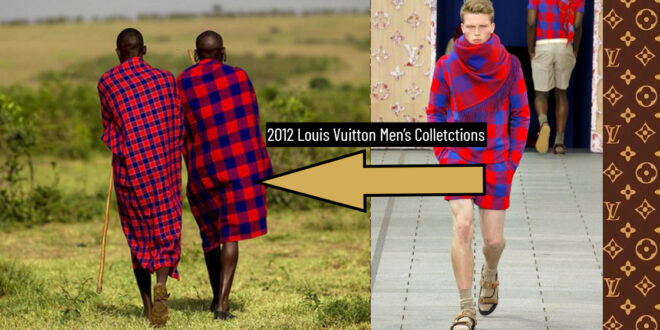In a world where fashion intersects with culture, creativity often walks a fine line between inspiration and appropriation. But what happens when global luxury brands build billion-dollar empires by borrowing—without credit—from the traditions of African communities?
Today, we’re spotlighting how some of the world’s most influential fashion houses—Louis Vuitton and Versace—have appropriated African designs, motifs, and heritage without giving due recognition or compensation. This isn’t just about aesthetics—it’s about ownership, ethics, and justice.
The Truth Behind Louis Vuitton’s “Iconic” Designs
The Louis Vuitton Monogram: Inspired or Stolen?
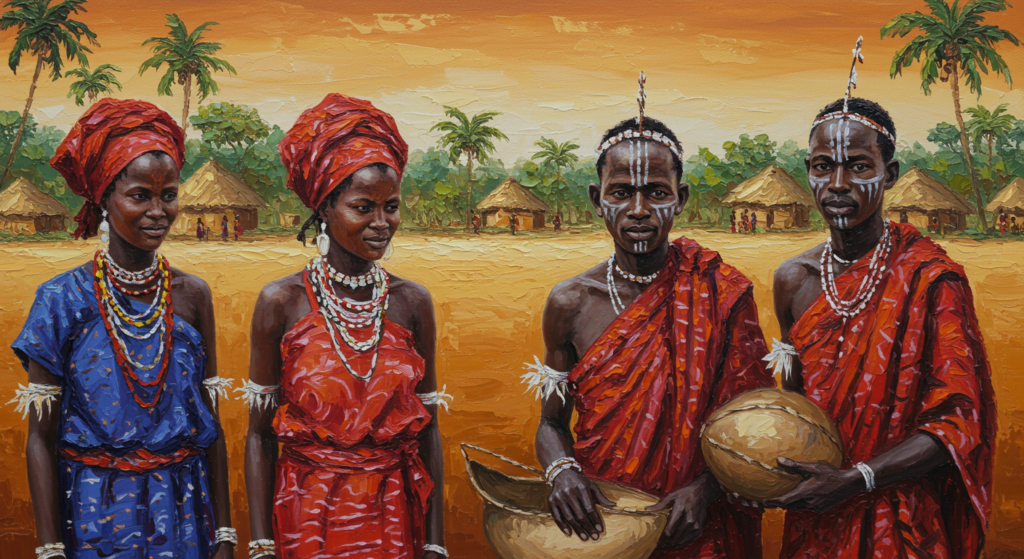
The world-famous Louis Vuitton monogram, first introduced in 1896, is hailed as a timeless symbol of European sophistication. However, deeper research suggests that parts of this now-iconic motif may have been directly lifted from a Queeley tribal mask—a sacred artifact from an African community. If true, the story of the monogram isn’t one of European ingenuity—it’s one of cultural erasure.
The Damier Print and the Kuba Kingdom
Louis Vuitton’s Damier print, recognizable for its checkered pattern, is another supposed hallmark of refined taste. Yet, the design appears to bear striking resemblance to the formal attire worn by Kuba chiefs in the Kuba Kingdom of the Congo. This traditional pattern, once reserved for African royalty, now circulates global markets under a French designer’s name—with no mention of its roots.
The Masai Influence in the 2012 Men’s Collection
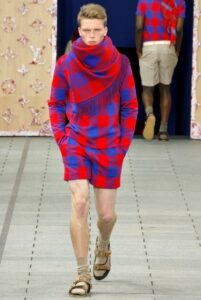 In 2012, Louis Vuitton released a men’s line that drew clear aesthetic inspiration from the Masai Shúkà blanket—a vibrant red-and-blue garment worn by the Masai people of Kenya and Tanzania. The designs captured the world’s attention, but not a single dollar or word of credit was extended to the communities that inspired them.
In 2012, Louis Vuitton released a men’s line that drew clear aesthetic inspiration from the Masai Shúkà blanket—a vibrant red-and-blue garment worn by the Masai people of Kenya and Tanzania. The designs captured the world’s attention, but not a single dollar or word of credit was extended to the communities that inspired them.
2014’s Tribal Mask Wallet: A Copy of Sacred Art?
Louis Vuitton’s 2014 Tribal Mask Chain Wallet was marketed as a bold, creative accessory. Yet, the design bore a remarkable resemblance to traditional African ceremonial masks, which hold deep spiritual significance. Once again, the brand profited from African culture—without acknowledging its origin or meaning.
Versace: Decorative Theft Disguised as Luxury
The “Greco” Print Controversy
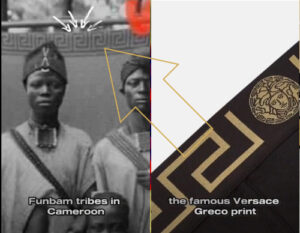 Versace’s signature “Greco” print, known for its bold, swirling geometric patterns, has become synonymous with the brand’s opulent image. However, reports suggest that this design was not solely rooted in Greco-Roman tradition. Instead, elements of the pattern appear to be derived from motifs used by the Kuba tribe in the Congo and the Fung Bond tribe in Cameroon. While the brand may position this print as a nod to classical European art, the reality is more complex—and arguably, more controversial. Traditional African art is being rebranded as “high fashion,” stripped of its cultural context. These African patterns carry deep cultural significance but are now mass-produced under a European brand without acknowledgment or royalty to their originators.
Versace’s signature “Greco” print, known for its bold, swirling geometric patterns, has become synonymous with the brand’s opulent image. However, reports suggest that this design was not solely rooted in Greco-Roman tradition. Instead, elements of the pattern appear to be derived from motifs used by the Kuba tribe in the Congo and the Fung Bond tribe in Cameroon. While the brand may position this print as a nod to classical European art, the reality is more complex—and arguably, more controversial. Traditional African art is being rebranded as “high fashion,” stripped of its cultural context. These African patterns carry deep cultural significance but are now mass-produced under a European brand without acknowledgment or royalty to their originators.
When “Inspiration” Becomes Exploitation
This raises a critical question: At what point does inspiration become exploitation?
When African tribes see their sacred symbols used as runway trends, yet receive no visibility, no profit, and no partnership—that’s more than a missed opportunity. That’s cultural theft.
These communities don’t just offer artistic influence—they carry histories, stories, and identities that are being commodified by brands that hold global influence and wealth.
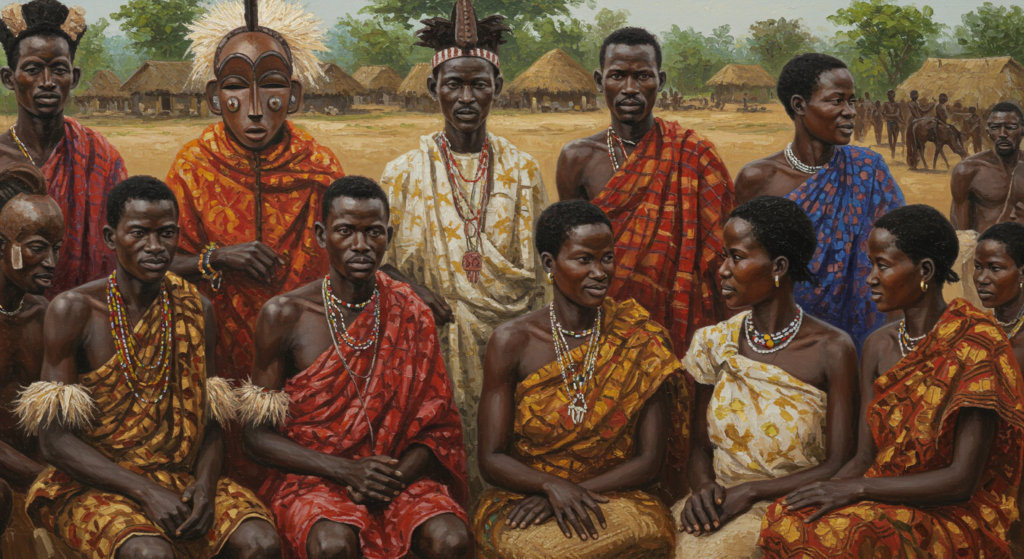
Time for Accountability: Should Brands Compensate the Cultures They Profit From?
Louis Vuitton and Versace have collectively generated billions using designs rooted in African tradition. But the tribes and communities from which these patterns and motifs originated have received nothing in return—no collaboration, no royalties, no acknowledgment.
So we ask:
Should these brands be required to compensate the cultures they borrow from?
Should there be legal and ethical standards for using indigenous designs in global fashion?
As fashion consumers, influencers, and creatives, we have a role to play. Acknowledging the origins of art is not just a courtesy—it’s a necessity. It’s how we ensure that creative expression is fair, respectful, and truly global.
As the world becomes more socially conscious, fashion brands must be held accountable. Recognizing and rewarding the cultural contributions they benefit from is not just ethical—it’s necessary for true creative justice.
What You Can Do:
Educate yourself on the cultural origins of the designs you wear.
Support brands that collaborate directly with artisans and indigenous communities.
Call out appropriation when you see it—and amplify voices fighting for cultural recognition.
Fashion doesn’t have to be extractive. It can be a platform for celebration, empowerment, and equity—but only if we demand it.
 Cmtv News News -Education – Entertainment – Sports
Cmtv News News -Education – Entertainment – Sports

